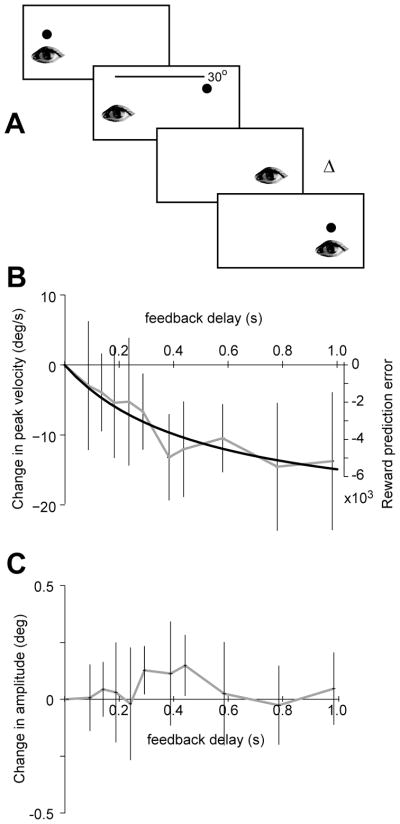Figure 4.
Delaying the stimulus discounts stimulus value. A. Experimental paradigm. Volunteers were asked to look at a stimulus, but after saccade initiation, the stimulus was removed. The stimulus was re-displayed at time Δ after saccade end. B. The black line is the theoretical estimate of reward prediction error (Eq. 17). Parameter values: α=1.08×104,β= 2.5. Saccade duration is p=110 ms. The data points are experimental results, showing within subject change in peak saccade velocity with respect to the no delay condition. The changes in saccade velocity are proportional to reward prediction error. C. Within subject change in saccade amplitudes were uncorrelated with feedback delay. The horizontal and vertical error bars are SEM.

